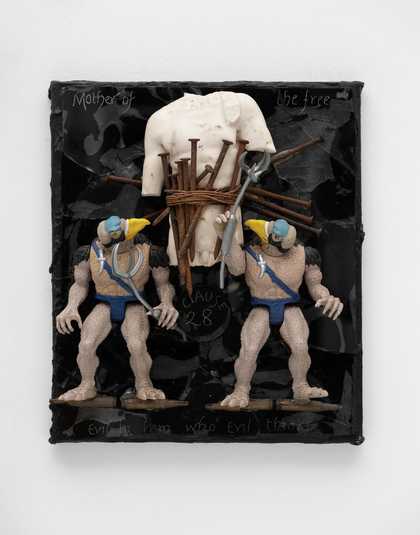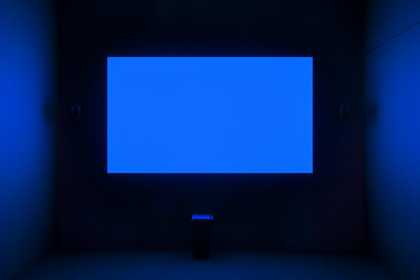James Mackay: When Derek was given a Super 8 camera as a gift in the Sixties, he set about producing a whole series of films, and I’ve been occupied in the last 20 years finding a way, not only to preserve and restore that work, but to also make it available widely. The first film that he made was directly linked to the studio that he occupied at Bankside. It’s shot and edited in-camera, but there’s a colour part and a black and white part. The colour part documents the inside of the studio and the people that came and went, and the black and white part documents mainly the exteriors. He experimented also with the speed of the camera, and created a film look which is particular to his film making. Derek was fascinated by Britain’s mythic past, and he made this pilgrimage to the great stone circle at Avebury in the early Seventies and documented all the remaining standing stones. It’s an incredibly beautiful film. Ashton’s Walk on Mon is one of the first real experiments with superimposing. He did just a very crude superimposition – it was two projectors running side by side onto a small piece of white card. You know, even if you make a small mistake, you have to go all the way back again, so it really meant rehearsing, practising the superimposition and then re-filming it, then waiting a couple of weeks to see what the result was, and then adding that to the final film or the work in progress. I think Derek went on holiday with his friend Ken to Fire Island in the early Seventies, and produced a long work, and later on re-filmed it using a prism. I think it’s just a prism held in front of the camera lens, and it throws what was originally a black and white film – or a largely black and white film – up into sort of a multi-coloured work. He did that quite a lot, re-filming existing films and incorporating them into other, newer works. In the latter half of the Seventies he would film around about six frames a second and he would make a film in a single take – just start filming and continue filming until the end of the cartridge. And a prime example of this way of working is Gerald’s film. It’s filmed at six frames a second and then projected at a slower speed, around about three or four frames a second. And it gives a kind of very soft, moving, slightly blurring step-motion kind of photography. Derek’s legacy for film-makers is he proved that you didn’t need much money to make a film, and that, you know, even small films are interesting over time. You know, you might have a small audience when you first show them, but I mean if there’s a good film, over the years, you know, you’ll always have an audience.



